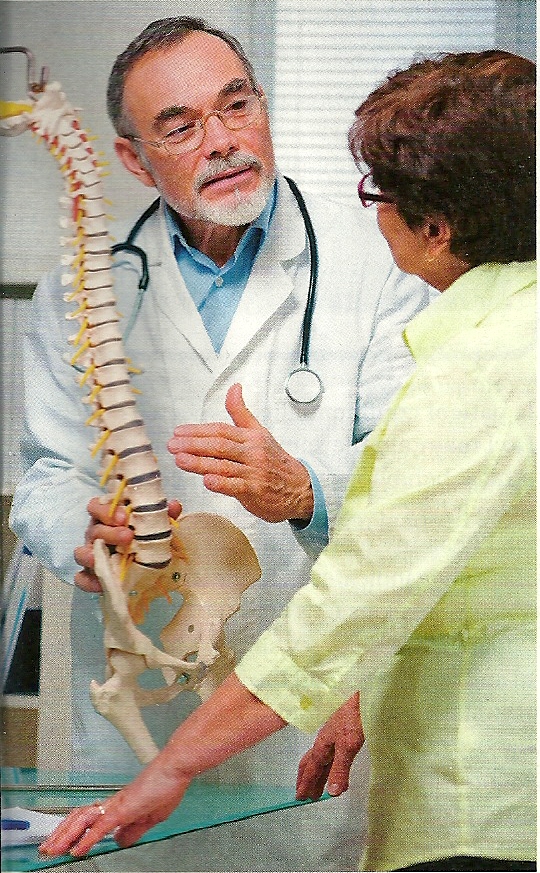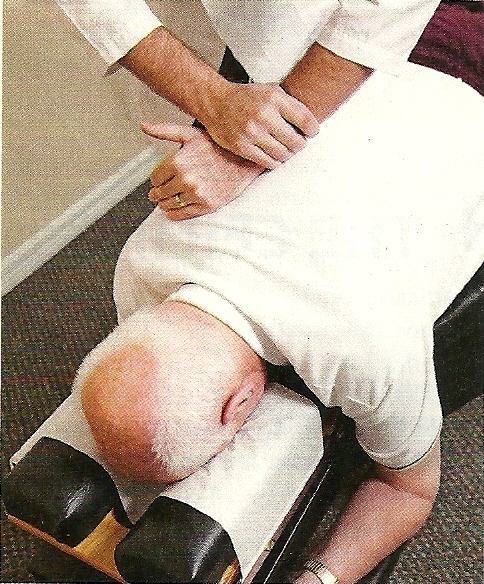

Reaching MDs This section was compiled by Frank M. Painter, D.C.
Send all comments or additions to: Frankp@chiro.org




SOURCE: ACA News
By Christina Acampora, DC
“Shared decision-making (SDM) is a collaborative process that allows patients and their providers to make health care decisions together, taking into account the best scientific evidence available, as well as the patient’s values and preferences.”
- Informed Medical Decisions Foundation
There is a lot of talk these days about informed decision-making and patient-centered care.
I know many doctors of chiropractic, including me, wonder how we can meet the need for back-pain relief if MDs remain largely uninformed about what chiropractic care is. With evidence-based guidelines and research promoting the safety and efficacy of our services, it’s time for MDs to learn more about what we do.
It is largely understood that back pain causes are multifaceted and that traditional health care still plays a major role in managing back pain. However, in order for each medical specialty to offer patient-centered, informed decision-making, we must work together. It is no longer about choosing one profession over another; it is choosing among each profession’s unique viewpoints to create the individualized care that is needed and reflective of what is most likely to work, while remaining attentive to what is least invasive and most safe.
We realize that far too often in the management of lower-back pain, evidence-based guidelines are not being followed. Ask ten primary-care doctors how they manage back pain and you’ll most likely receive ten different approaches as answers. In fact, it seems that MDs know more about surgery, needed by only a small percentage of patients, than they do about chiropractic, which should be the starting point of a conservative approach for the majority of back-pain sufferers.
Referrals Matter
Unprompted MD-to-DC referrals, those that come without outreach or communication between the two professions, are rare. Current market share for chiropractic care, from the financial and health care statistics, is not reflective of strong and positive interdisciplinary relationships between the medical and chiropractic professions. We cannot continue to set the expectation that patients will make informed decisions about their care while our two professions continue to work in isolation. Nor can we expect patients to make informed decisions about their care if they aren’t receiving accurate, evidence-based information from their providers.
For MDs willing to refer, chiropractic physicians must do the work needed to educate medical physicians on when to refer to us. If they don’t want to take the time to learn, let us teach them, as most DCs already offer the majority of alternative care choices for back pain in our offices and can work with patients to make such treatment decisions.
Informed Decision-Making
Informed decision-making and participating in treatment choices are an expected right for patients. But what happens to those patients who seek care from MDs who quote inaccurate “facts” about chiropractic care or discourage patients from seeking chiropractic altogether because of uninformed personal opinions, rather than evidence- based guidelines and supporting research on the efficacy and safety of manipulation? Just last month, a young physician told me that he felt manipulation caused paralysis and that he had seen multiple cases in his office. We know this isn’t true, but this is his perception and likely what he tells his patients about chiropractic. More likely, these patients presented to the DC with the same symptoms and those symptoms remained unresolved, thus prompting further medical investigation. The inadequate communication between these providers only perpetuates misinformation, which ultimately finds its way to the consumer. This is not evidence-based, informed decision-making, and it will take communication—in this case lots of it—to rectify these observations.
It’s a positive step that some doctors are at least willing to state their opinions, as this allows for discussions — discussions each of us should be having with the MDs in our communities. With our continued outreach and positive trends such as JAMA’s recent statement that chiropractic care be considered in the treatment of back pain, we can continue to expect better integration among our two professions. JAMA also said that surgery is not usually needed but may be considered if other therapies have failed. [Low-Back Pain. JAMA. 2013 (Apr 24); 309 (16): 1738]
Cost Considerations
Health care costs are out of control. How can we expect health care costs to drop when medication and side effects become a primary tool for the management of back pain? What about the rates of failed back surgery? One Ohio workers’ compensation study documented only a 26-percent return-to-work rate for postsurgical workers compared with a 67-percent return-to-work rate for those who didn’t have surgery. The indirect and direct costs of care for back pain are staggering, and while it is clear that what is currently being done is not working, little change has occurred in the approach, including a more inclusive role for DCs.
Surgery and medications may be the only answer for some patients, but without a history of having tried chiropractic care, which then failed, these more invasive options are inconsistent with evidence-based guidelines and do not meet the criteria for informed decision-making. This system is not meeting the consumers’ need for informed medical decision making.
Need for Integration
With the evolution of research in the ‘80s and ‘90s, many DCs thought doors would begin to open to the medical community. It’s been a slow process, but it is happening, and fortunately it seems to have been accelerating in recent years. What is clear is that while research does support our role, it has also invited competition, as PTs now offer manipulation and DOs are recommitting their skills to providing manipulation to their patients. As these professions are already seemingly integrated with MDs, it creates a more urgent environment to correct misperceptions and forge necessary bonds. Doing so opens the doors to a massive market share that is currently not open to our services, setting the stage for collaboration.
Through collaboration and communication comes mutual provider confidence. Chiropractic physicians must be confident in the health care team that we work with, such that our recommendations will be supported and reinforced. Likewise, we must support patients’ and MDs’ decisions during the course of care as well. Mutual trust and confidence are pivotal players in collaboration and referrals.
Finally, that which is most important: patient satisfaction gained through trust and results. Higher-level decision-making, communication, multiple perspectives and treatment types established through mutual agreement and respect are all benefits of a more functional relationship and will ultimately be the best approach to managing back pain. It is in this environment that we can expect a more compliant and satisfied patient, while also lowering costs of care by preventing, when possible, surgical intervention and long-term prescription reliance.
Dr. Acampora is the author of Marketing Chiropractic to Medical Practices and the founder of Aligned Methods, a company specializing in helping DCs establish informed working relationships with medical physicians.

Return to NewDCs


| Home Page | Visit Our Sponsors | Become a Sponsor |
Please read our DISCLAIMER |

